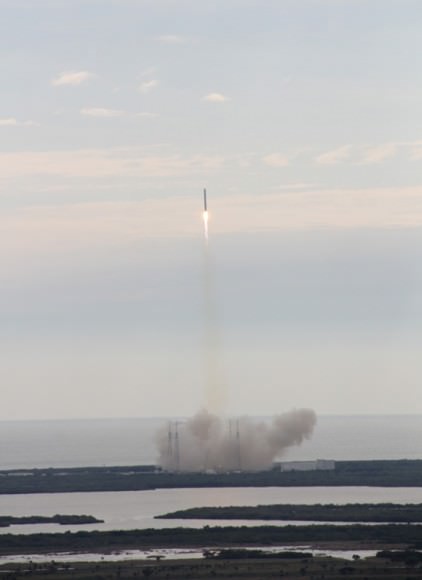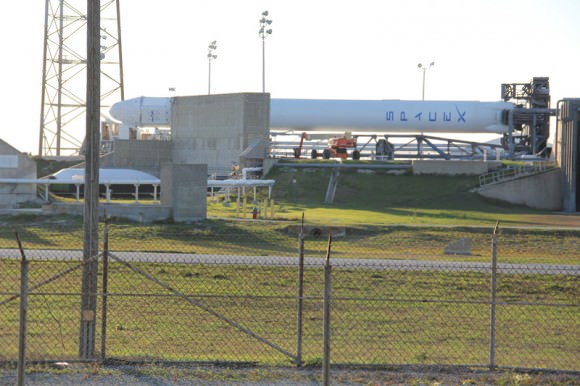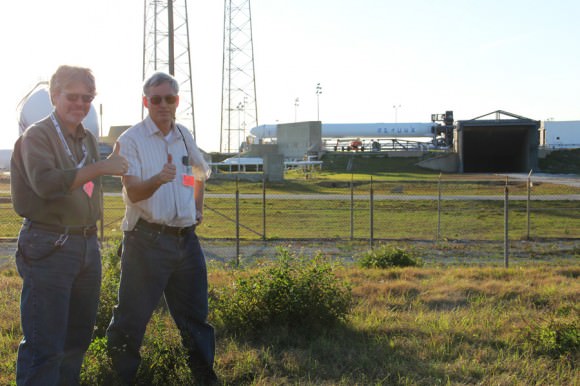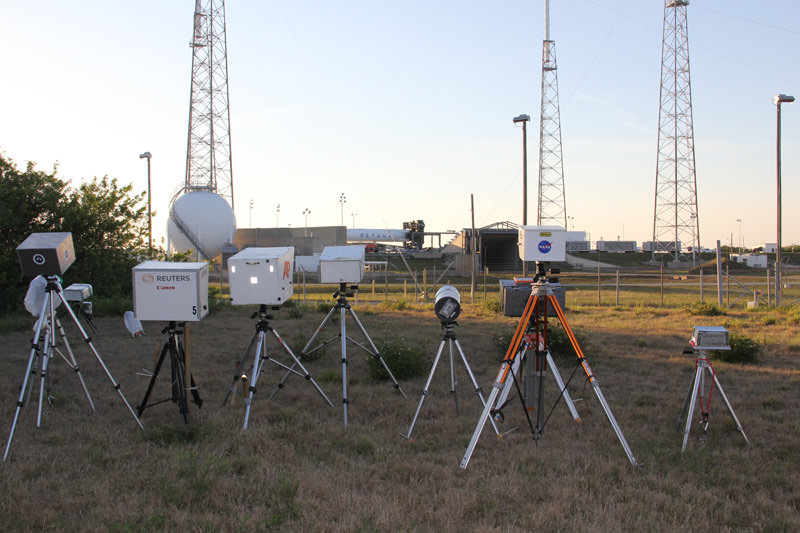Video: Launch of SpaceX Falcon 9 on CRS-2 mission on March 1, 2013 from Cape Canaveral, Florida. Credit: Jeff Seibert/Mike Barrett/Wired4Space.com
Have you ever wondered what it would be like to be standing at the base of a launch pad when a powerful rocket ignites for the heavens?
It’s a question I get from many kids and adults.
So check out the fabulous video from my friends Mike Barrett and Jeff Seibert- and feel the power of the mighty SpaceX Falcon 9 which just rocketed to space on March 1 from Space Launch Complex 40 on Cape Canaveral Air Force Station, Florida.
Mike and Jeff set up a series of video recorders distributed around the Falcon 9 Launch Pad – for a ‘You Are There’ experience.
Well although you’d enjoy the awesome view for a split second, the deafening sound and fury would certainly drive you mad, and then leave you dead or vegetabilized and wishing you were dead.
The cameras get creamed in seconds with mud, soot and ash.
How is this view possible?
Those of us media folks lucky enough to cover rocket launches, usually get to visit around the pad the night before to view the behemoths up close – after they are rolled out and unveiled for liftoff.
We also have the opportunity to set up what’s called “remote cameras” spaced around the pad that take exquisite images and videos from just dozens of yards (meters) away – instead of from ‘safe’ distance a few miles (km) away.
The cameras can be triggered by sound or timers to capture up close sounds and sights we humans can’t survive.
After a shaky start, the SpaceX Dragon cargo resupply capsule launched atop the Falcon 9 safely docked at the International Space Station on Sunday, March 3.
The SpaceX CRS-3 flight is slated to blast off sometime during Fall 2013
Maybe we’ll see you there !





“The cameras get creamed in seconds with mud, soot and ash.”
Maybe it’s answered in the video — I’m at the office and can’t listen. (I can look, as it happens, though of course I shouldn’t take much time.) Where is the mud coming from? I dimly recall large pools of water being used with other launch systems to absorb the blast effects like heat and sound; is that the source?
Good point. Maybe someone can answer that for the both of us. PEACE!